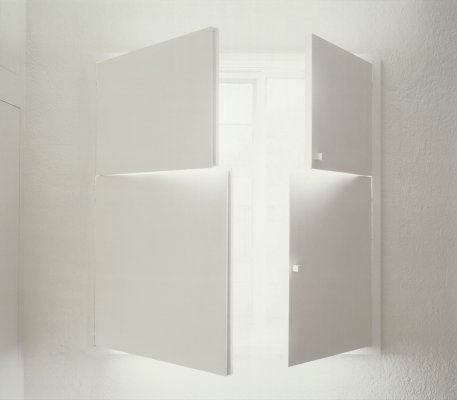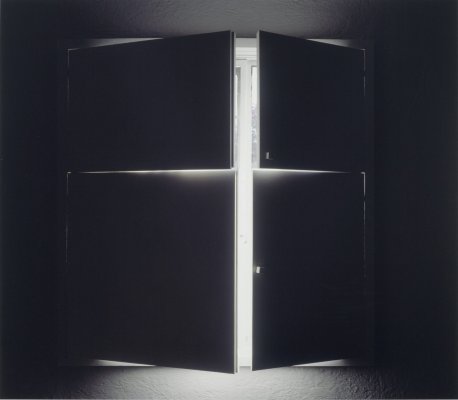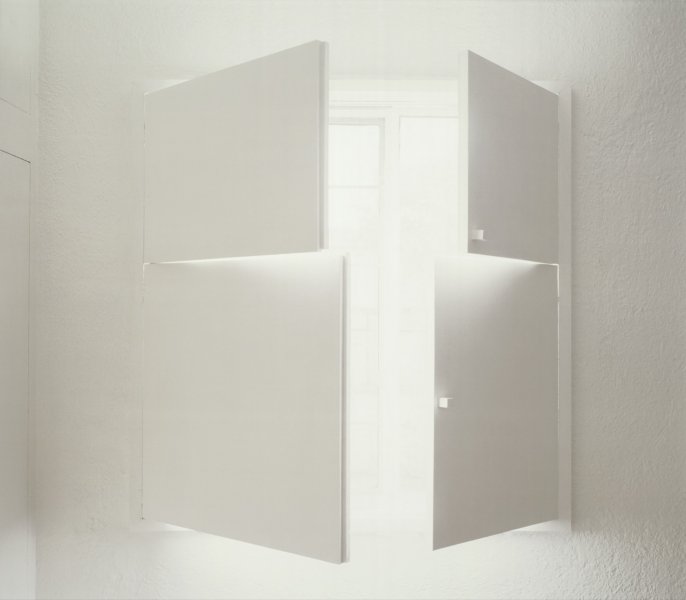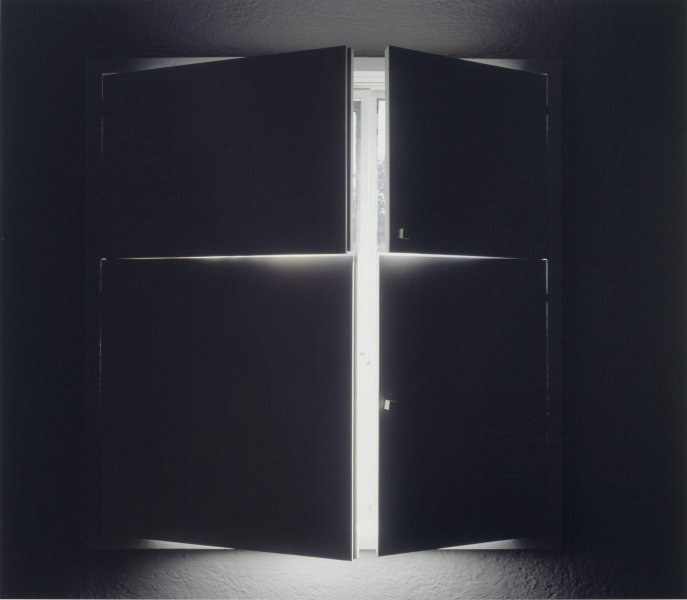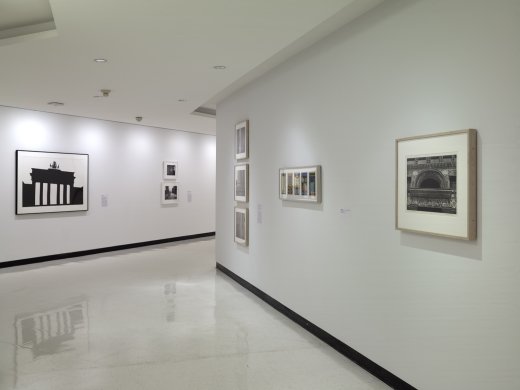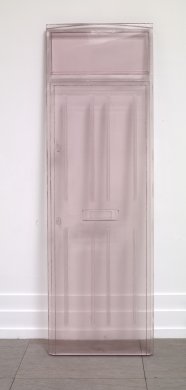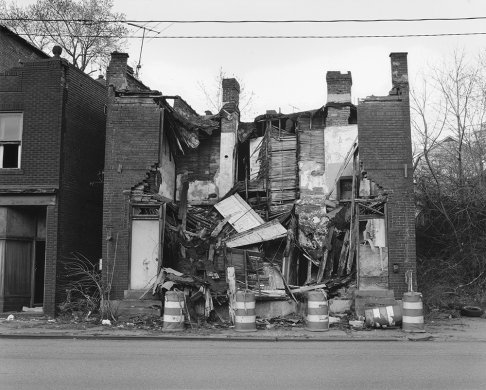The exhibition Window to Wall: Art from Architecture surveys the ways in which artists have turned their attention—and ours—to architecture through a focus on structure and surface as well as buildings’ emotional and political resonances.
From the late nineteenth century onwards, artists have drawn parallels between the architecture of buildings and the “architecture,” or structure, of the picture plane. Their works encourage us to appreciate buildings as formal compositions in three-dimensional space.
By emphasizing the sensuous pleasure of opening up wooden shutters and observing the play of light and shadow, Luisa Lambri’s close-up images of a window in the home of Mexican architect Luis Barragán suggest that architecture is something that must be experienced to be understood. As she explained in 2014, her photographs are byproducts of her physical interactions with buildings, allowing her to interject her own perspective into the (traditionally masculine) history of architecture:
“I very often take sequences of pictures in a way so that the images reflect my position in the space, or the movement, or my actions. For example I may open windows to establish a relationship with them or to relate to the space. It’s a physical thing, it’s a simple, beautiful thing to open a window and let some light in, and that very simple gesture is enough to somehow really make the place you like look more like you. So it’s about this relationship and dialogue [of] the images with architecture, with people, and with myself.”
